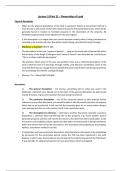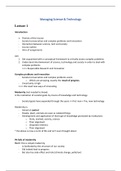Lecture notes
Property Law - Lecture 5 (Part 2) - Ownership of Land
- Module
- Property Law (LAW08118)
- Institution
- Edinburgh Napier University (ENU)
Lecture notes for property law with case descriptions. Author achieved a first-class grade in the module.
[Show more]












